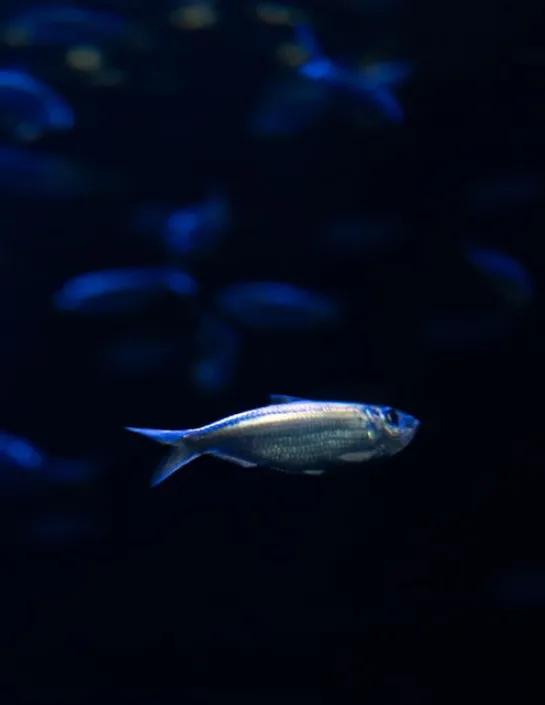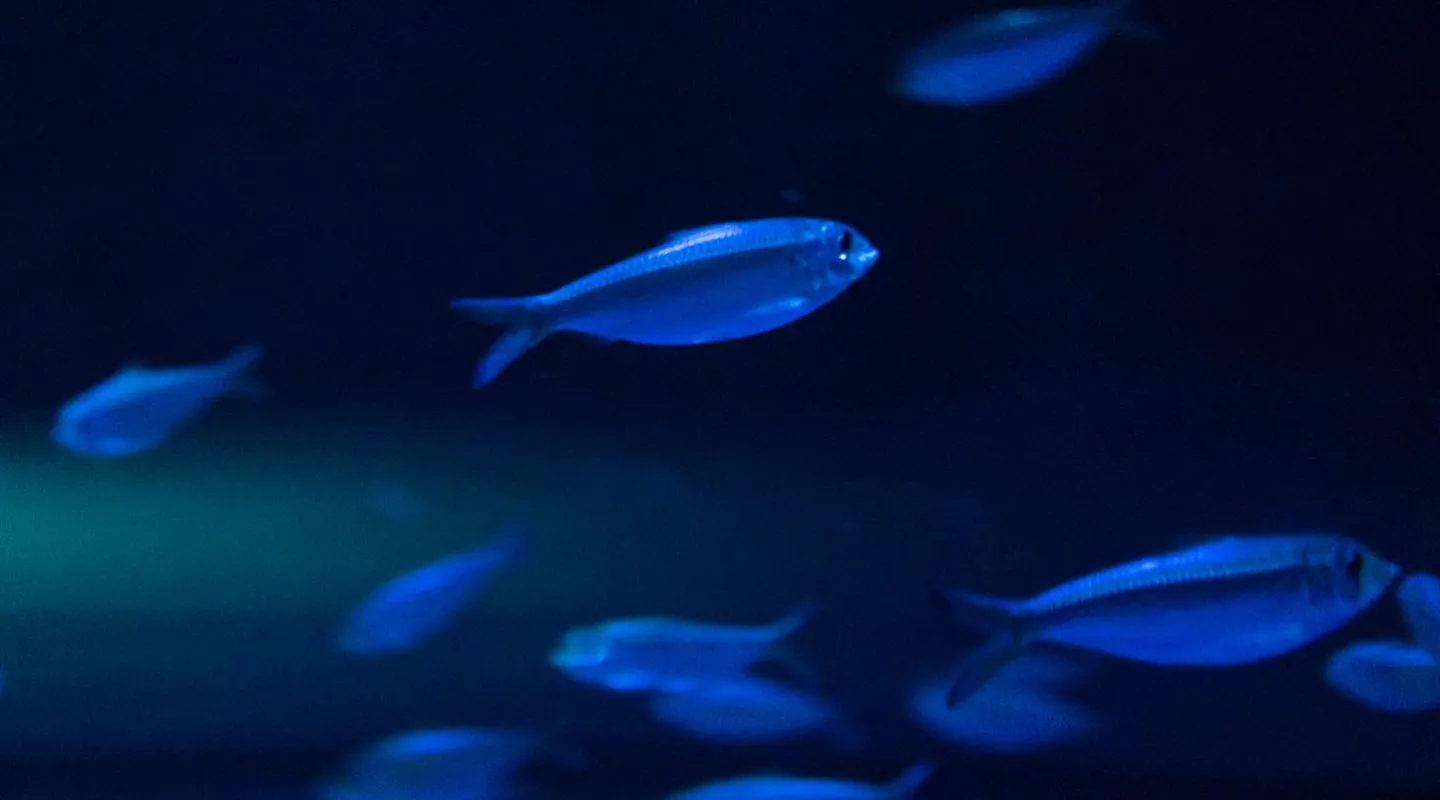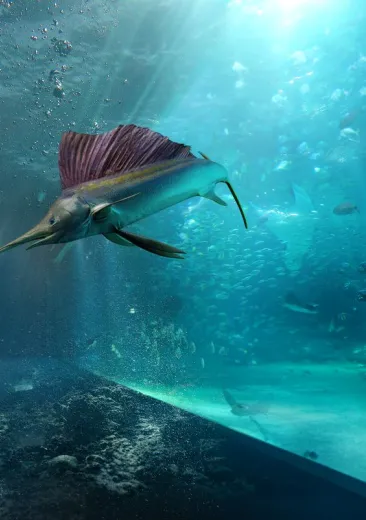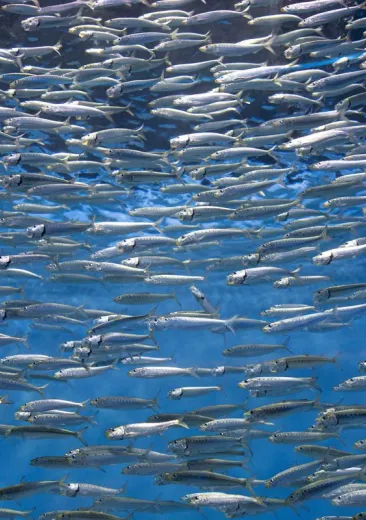100 000 It is the number of individuals that a shoal of false herrings can contain.
The adults head for the open sea to feed and reproduce, while the juveniles often stay in coastal waters such as estuaries, mangrove swamps, lagoons, island coral reefs and seagrass beds
This small species grows quickly and has a short life span of probably 3 to 5 years.
The false herring is a nocturnal predator which feeds on molluscs, worms, fish eggs and zooplankton especially copepods.

Identity card
False herring
- Scientific name:
- Harengula clupeola
- Family:
- Clupeidae
- Class:
- Actinopterygii
- Phylum:
- Chordata
- Year of description:
- Cuvier, 1829
- IUCN Status:
- Least Concern
- Distribution:
-
Western subtropical region of Atlantic, Gulf of Mexico, south-eastern Florida, northern Brazil, Carribean, West Indies.
- Habitat:
-
It is a pelagic species which lives at depths of between 0 and 50 metres.
- Size:
The false herring has an average size of 9 cm but can reach a maximum length of 18 cm.
- Diet:
-
The false herring is a nocturnal predator which feeds on molluscs, worms, fish eggs and zooplankton especially copepods.
- Longevity:
This small species grows quickly and has a short life span of probably 3 to 5 years.







